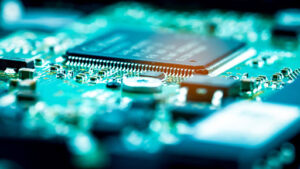In the bustling world of consumer electronics, product design stands as a pivotal cornerstone. It’s the bridge between technology’s raw potential and the seamless user experience we’ve come to expect. But what goes into crafting these cutting-edge devices that are as intuitive as they are innovative?
Innovative Touchpoints: Generating QR Codes in Design
As technology evolves, consumer electronics are incorporating more interactive features to enhance user engagement. An interesting trend is the integration of QR codes into product design. These codes can be strategically placed on devices or their packaging to offer quick access to product manuals, tutorials, or even augmented reality experiences. This application not only enriches the user experience but also aligns with the growing trend towards digital interactivity in everyday gadgets.
From smartphones to smart home devices, the design process is an intricate dance of form and function. It’s a journey that requires a deep understanding of user needs, technological constraints, and market trends. This article aims to shed light on the fascinating world of consumer electronics product design, offering insights into the complex process behind the gadgets we can’t live without.
Consumer Electronics Product Design

Understanding consumer electronics product design involves grasping numerous elements. The art of creating a well-functioning, aesthetically pleasing, and market-relevant gadget lies in the balance. It’s the blend of technology, design, market trends, and user requirements that propels innovation in this field.
Investigate product functionality to get a grasp of design considerations. A design team focuses on creating a gadget that performs its intended functions efficiently and reliably. For example, a digital camera needs to capture high-quality images under different lighting conditions and settings.
Appreciate aesthetic elements that contribute to overall appeal. Successful designs often rely on considering the user’s interaction with the product. A mobile phone, for instance, boasts of sleek design, comfortable grip, and easy navigability of features.
The Process of Consumer Electronics Product Design
Delineating the product design process entails a sequence of stages. These involve identifying a market opportunity, conceptualising a solution, developing the system architecture, designing the product, testing it, and finally – launching it.

First, spotting a market opportunity involves in-depth research, considering not just current trends, but also direct input from end-users. They analyse end-user needs, consumer behaviours, preferences, and pain-points. For example, the rise in mobile usage triggered the need for portable chargers and power banks, which represented a market opportunity.
Conceptualization comes next. Designers brainstorm product ideas capable of addressing the identified need or trend. At this stage, it’s more about functionality, less about form. For instance, considering the need for portable power, designers thought about creating a device that could store and deliver power to mobile phones.
Thirdly, system architecture development follows conceptualization. It provides a blueprint for the product, detailing how different components interact. Here’s where functional aspects meet design elements. Using our power bank example – deciding on the location of the ports, power indication lights, and how the case houses all the components highlights system architecture.
Trends in Consumer Electronics Product Design
Trends play a crucial role in shaping the landscape of consumer electronics product design. They reflect changes in consumer preferences, technological advancements, and market dynamics. Here are some of the most significant trends impacting the field:
- Emphasis on user experience (UX): Enhancing the user experience often tops the priority list in product design. Designers focus on making products intuitive, smooth, and accommodating for users. An example is Samsung’s One UI interface, designed to make smartphone usage efficient and pleasurable.
- Adoption of AI and IoT technologies: Integration of AI and IoT technologies in consumer electronics is no longer an exception but a norm. These technologies are making electronics smarter, automated and interconnected. Google Nest Hub’s use of AI and IoT for smart home control exemplifies this trend.
- Sustainability and Eco-design: With increasing awareness about environmental issues, eco-design and sustainability are gaining importance. The use of recyclable materials, energy-efficient technologies, and minimalistic packaging are markers of this trend, as seen with the Fairphone, a smartphone designed with ethical sourcing and sustainability in mind.
- Compactness and Portability: The demand for compact and portable devices is growing exponentially. Consumers crave devices they can carry around easily without sacrificing functionality. The proliferation of wearables like Apple Watches and FitBits signifies this trend.
- Incorporation of 5G Technology: As 5G becomes more widely available, electronics designers are integrating 5G capabilities into their products. The launch of numerous 5G smartphones from brands like Samsung, Apple, and Huawei echoes this trend.
